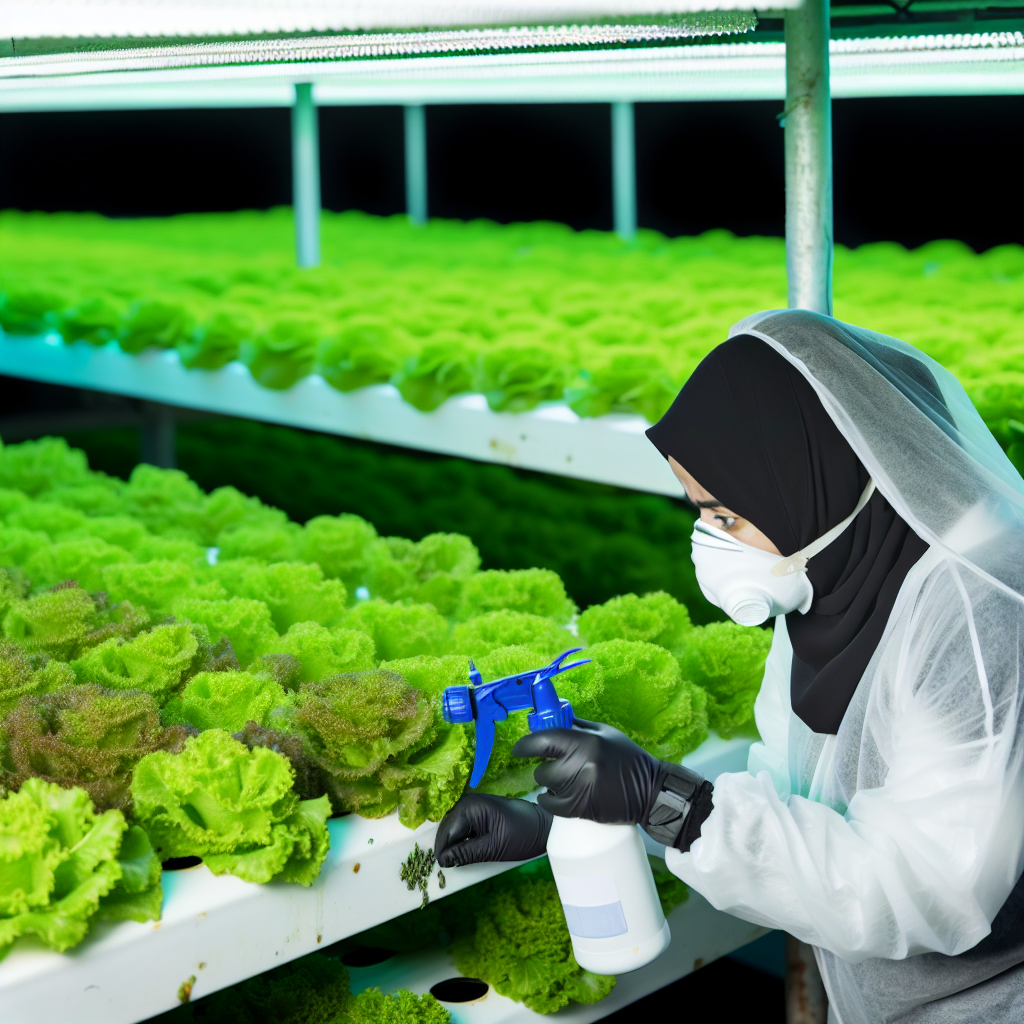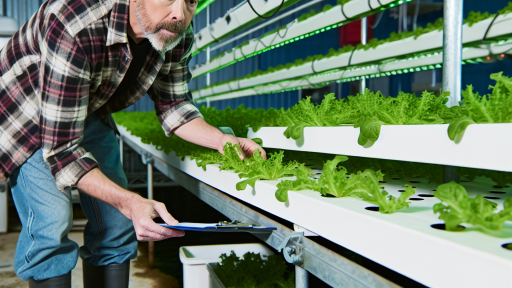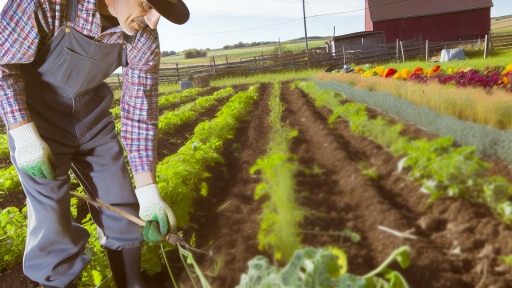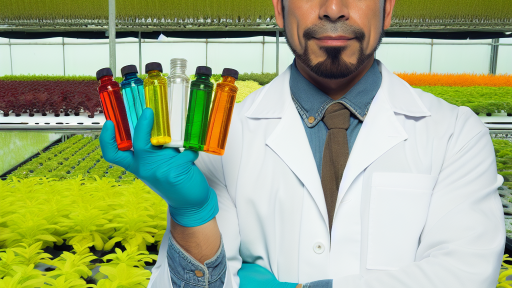Introduction to Pest Management in Hydroponic Systems
Pest management in hydroponic farming is vital for success.
It involves controlling pests without harming crops or the environment.
Hydroponic systems provide a unique challenge for pest management.
With high humidity and nutrient-dense environments, pests thrive easily.
Farmers need to adopt specific strategies to manage these issues.
Understanding Common Pests
Knowledge of common pests is essential for effective management.
Identifying pests early can prevent major infestations.
Common pests in hydroponic systems include aphids, spider mites, and thrips.
Aphids typically feed on plant sap, weakening the plants.
Spider mites reproduce quickly and leave fine webbing on plants.
Thrips can cause damage to leaves and flowers, affecting yields.
Prevention Strategies
Prevention is the first line of defense in pest management.
Start by maintaining healthy plants through proper nutrition.
Regularly inspect plants for signs of pests or damage.
Sanitation also plays a crucial role in preventing infestations.
Transform Your Agribusiness
Unlock your farm's potential with expert advice tailored to your needs. Get actionable steps that drive real results.
Get StartedRemove dead leaves or plant debris that can harbor pests.
Additionally, use barriers like insect mesh to protect crops.
Cultural Practices for Pest Control
Cultural practices can significantly minimize pest populations.
Implement crop rotation to disrupt pest life cycles.
Diverse planting can also reduce pest preferences.
Encouraging beneficial insects helps control pest populations naturally.
Examples include ladybugs and lacewings, which eat common pests.
Biological Control Methods
Biological control methods utilize natural enemies of pests.
Introducing beneficial insects is an effective strategy.
For instance, releasing predatory mites can control spider mites.
Additionally, using entomopathogenic nematodes can target soil-dwelling pests.
These methods are safe for crops and the environment.
Monitoring and Evaluation
Regular monitoring is crucial for effective pest management.
Farmers should use traps and scouting methods to detect pests.
Evaluate infestations to determine the appropriate response.
Keep records to identify patterns and improve management strategies.
Adjust techniques based on monitoring results to enhance effectiveness.
Common Pests in Hydroponic Farming and Their Impact
Introduction to Hydroponic Pests
Pest management is crucial for hydroponic farming success.
Hydroponic systems can attract various pests.
Identifying these pests early prevents significant crop loss.
Common Pests Found in Hydroponic Systems
- Spider mites
- Whiteflies
- Aphids
- Thrips
- Fungus gnats
Spider Mites
Spider mites are tiny arachnids that thrive in warm conditions.
They cause leaf discoloration and can stunt plant growth.
Checking for webbing can help identify their presence.
Whiteflies
Whiteflies resemble tiny moths and feed on plant sap.
Showcase Your Farming Business
Publish your professional farming services profile on our blog for a one-time fee of $200 and reach a dedicated audience of farmers and agribusiness owners.
Publish Your ProfileThey excrete honeydew, leading to sooty mold.
Monitoring for signs of honeydew can aid in early detection.
Aphids
Aphids can reproduce quickly, leading to large populations.
They also weaken plants by sucking out vital fluids.
Look for curled leaves as a potential sign of aphid infestation.
Thrips
Thrips are small insects that can damage flowers and leaves.
They leave behind silvery streaks on plant surfaces.
Regular inspections can help catch them before they spread.
Fungus Gnats
Fungus gnats thrive in moist environments, especially in growing media.
They can harm young plants by feeding on roots.
Identifying their larvae in the soil can prevent root damage.
Impact of Pests on Hydroponic Farming
Pests can severely diminish crop yields in hydroponics.
They not only affect plant health but can also introduce diseases.
This can lead to increased costs for pest management and crop replacement.
Effective Pest Management Strategies
Implementing integrated pest management is essential.
This includes a combination of biological, cultural, and chemical controls.
Regular monitoring and sanitation also play vital roles.
Using beneficial insects can naturally suppress pest populations.
Cultural Control Strategies for Pest Management
Understanding Cultural Controls
Cultural control strategies focus on making the environment less conducive to pests.
These methods involve changes in practices and management techniques.
Farmers can significantly reduce pest populations by altering their farming approaches.
In hydroponic farming, maintaining a sterile environment is critical.
Crop Rotation
Rotating crops disrupts the life cycles of pests and diseases.
This technique helps prevent the build-up of specific pest populations.
It is an effective way to manage soil-borne pathogens.
Farmers can choose different plant families to maximize success.
Soil and Water Management
Proper soil and water management plays a crucial role in pest control.
Farmers should regularly monitor nutrient levels and moisture content.
Healthy plants are more resistant to pests and diseases.
Additionally, maintaining good drainage prevents water accumulation.
Sanitation Practices
Maintaining cleanliness in the growing area is essential.
Removing debris can limit places for pests to hide.
Regularly cleaning tools and equipment also prevents disease spread.
Sanitary practices contribute to healthier crop growth.
Use of Resistant Varieties
Selecting pest-resistant plant varieties is a smart decision.
These varieties can withstand pest pressures better than susceptible ones.
Farmers should research and invest in such seeds to enhance productivity.
Utilizing resistant crops reduces the need for pesticides.
Monitoring and Observation
Regular pest monitoring helps farmers detect issues early.
Farmers should keep an eye out for signs of pest damage.
Showcase Your Farming Business
Publish your professional farming services profile on our blog for a one-time fee of $200 and reach a dedicated audience of farmers and agribusiness owners.
Publish Your ProfileObservational vigilance allows for timely interventions.
Maintaining records of pest activity is beneficial for future planning.
Integration with Other Management Practices
Cultural controls work best when integrated with other pest management strategies.
Combining practices such as biological control enhances effectiveness.
Farmers should develop a comprehensive pest management plan.
This holistic approach ensures sustainable crop production.
Find Out More: How to Start an Heirloom Vegetable Garden
Biological Control Agents for Hydroponic Pest Control
Introduction to Biological Control
Biological control uses natural enemies to manage pest populations.
This method enhances ecological balance in hydroponic systems.
Farmers can rely on beneficial insects and microorganisms for pest management.
Types of Biological Control Agents
Different biological control agents target specific pests effectively.
- Predators such as ladybugs control aphids and mites.
- Parasitoids like wasps lay eggs inside pest larvae.
- Nematodes target soil-dwelling pests, providing a robust defense.
Selection of Beneficial Insects
Choosing the right beneficial insects is crucial for effective pest control.
Farmers should assess their specific pest issues before selection.
Proper identification ensures efficient targeting of pests.
For example, green lacewings and predatory mites offer excellent results.
Using Microbial Control Agents
Microbial control agents include bacteria, fungi, and viruses.
Bacillus thuringiensis effectively controls caterpillars and beetles.
Entomopathogenic fungi invade and kill various pest insects.
Farmers should understand the lifecycle of pests for effective application.
Integrating Biological Control in Hydroponic Systems
Integration of biological control agents requires strategic planning.
Farmers must monitor pest populations regularly to adjust their strategies.
Additionally, maintaining a suitable environment supports beneficial species.
Hydroponic systems can thrive with the right balance of natural pest control.
Challenges of Biological Control
Challenges may arise when introducing biological control agents.
Non-target effects can impact beneficial insects unintentionally.
Moreover, resistance development in pests poses ongoing issues.
Regular evaluation and adjustment of methods are vital for success.
Benefits of Biological Control in Hydroponic Systems
Biological control offers a sustainable alternative to chemical pesticides.
While it requires careful implementation, the benefits are substantial.
Adopting these methods enhances the overall health of hydroponic systems.
Uncover the Details: Sustainable Practices in Aquaponics Farming
Chemical Control Options
Pesticides in Hydroponics
Pesticides play a crucial role in managing pests in hydroponic systems.
They help ensure that plants remain healthy and productive.
Using the right pesticides can significantly reduce pest populations.
However, it is essential to select products that are safe for your crops.
Some pesticides may have harmful residues.
To avoid this, choose pesticides specifically labeled for hydroponics.
Types of Pesticides
There are various types of pesticides available for hydroponic farming.
These include chemical, biological, and natural pesticides.
Chemical pesticides often offer quick results.
Showcase Your Farming Business
Publish your professional farming services profile on our blog for a one-time fee of $200 and reach a dedicated audience of farmers and agribusiness owners.
Publish Your ProfileHowever, they can sometimes harm beneficial organisms.
On the other hand, biological pesticides use natural predators to control pests.
Natural pesticides are derived from plant or mineral sources.
These options tend to be safer for the environment.
Choosing the Right Product
Selecting the right pesticide requires careful consideration.
First, identify the specific pest you are dealing with.
Next, check the product’s compatibility with hydroponic systems.
Read the label for application instructions and restrictions.
Additionally, consider the residue levels of the pesticide.
Lower residue products are preferable for food safety.
Application Methods
Proper application of pesticides is vital for effectiveness.
Foliar sprays are common in hydroponic setups.
These sprays coat the leaves directly for immediate action.
You can also use systemic pesticides, absorbed through plant roots.
Moreover, timing your application can enhance results.
Apply pesticides during the early morning or late afternoon.
This approach minimizes evaporation and maximizes absorption.
Safety Precautions
Safety should always come first when using pesticides.
Wear protective gear such as gloves and masks.
Ensure proper ventilation in your growing area.
Always follow the manufacturer’s instructions for safe use.
Keep all pesticide products away from children and pets.
Regularly inspect your plants for signs of toxicity.
Address any issues promptly to avoid harm to your crops.
You Might Also Like: The Power of Container Farming: A Guide to High-Yield Gardens

Integrated Pest Management Approaches for Hydroponics
Understanding Integrated Pest Management (IPM)
Integrated Pest Management combines various strategies for effective pest control.
IPM focuses on minimizing the use of chemicals while maximizing crop health.
This approach considers ecological principles and pest life cycles.
Moreover, IPM emphasizes monitoring and identifying pest species accurately.
Monitoring and Identifying Pests
Regular monitoring helps detect pest issues early.
Use sticky traps to measure pest populations effectively.
Additionally, scouting plants helps recognize signs of infestation.
Identifying pests correctly ensures targeted control measures.
Furthermore, understanding beneficial insects aids in maintaining balance.
Cultural Control Methods
Cultural practices play a significant role in pest management.
Rotate crops to disrupt pest life cycles.
Ensure optimal growing conditions to promote plant health.
Regularly clean and disinfect growing environments to prevent infestations.
Implementing proper spacing enhances air circulation, reducing humidity.
Biological Control Options
Biological control employs natural predators or parasites to manage pests.
Showcase Your Farming Business
Publish your professional farming services profile on our blog for a one-time fee of $200 and reach a dedicated audience of farmers and agribusiness owners.
Publish Your ProfileIntroduce beneficial insects like ladybugs or predatory wasps.
Furthermore, nematodes can control soil-borne pests effectively.
Create habitats that support beneficial species in your hydroponics system.
Physical and Mechanical Controls
Physical barriers prevent pests from accessing plants.
Use insect netting to protect crops from flying insects.
Additionally, washing plants with water dislodges pests and eggs.
Consider using traps to reduce pest populations actively.
Using Chemical Controls Responsibly
When necessary, choose targeted pesticides with minimal impact.
Apply them during specific times to minimize harm to beneficial insects.
Always follow label instructions to ensure safe usage.
Moreover, integrate chemicals with other IPM strategies for best results.
Educating and Training Staff
Educating staff is essential for an effective IPM program.
Provide training on pest identification and management strategies.
Encourage staff to stay informed about new pest management techniques.
Regular team meetings can help share insights and experiences.
Uncover the Details: Micro-Farming in Urban Spaces: Turning Tiny Plots into Productive Farms
Preventative Measures for Reducing Pest Incidence in Hydroponic Farms
Understanding the Environment
Creating a clean and controlled environment promotes plant health.
Maintaining optimal humidity levels prevents pest attraction.
A well-ventilated grow area deters pests that thrive in stagnant air.
Implementing Regular Inspections
Routine inspections help identify pest issues before they escalate.
Catching problems early ensures timely interventions and safeguards crops.
Establish a checklist for regular monitoring to enhance pest detection.
Utilizing Companion Planting
Companion planting strategically improves pest resistance in hydroponics.
Certain plants can repel pests or attract beneficial insects.
Research plant combinations that work well in your specific setup.
Choosing the Right Nutrients
Supplying balanced nutrients strengthens plant defenses against pests.
Consider organic options, which enhance overall plant vitality.
Monitor nutrient levels regularly to maintain optimal growth conditions.
Employing Physical Barriers
Using physical barriers effectively deters pests from accessing plants.
Row covers and nets create protective shields without harmful chemicals.
Ensure barriers are securely installed to prevent pest entry.
Implementing Biological Control Methods
Introducing beneficial insects offers a natural way to manage pests.
Ladybugs and lacewings are effective for controlling aphid populations.
Regularly assess the balance of beneficial insects in your system.
Establishing a Pest Management Plan
Develop a comprehensive pest management plan to guide interventions.
This plan should outline prevention strategies and response protocols.
Regularly review and adjust the plan based on observed pest activity.
Evaluating the Effectiveness of Pest Management Techniques
Understanding Pest Management Strategies
Pest management in hydroponic farming requires specific strategies.
These strategies include biological, cultural, and chemical methods.
Each method plays a distinct role in controlling pests.
Showcase Your Farming Business
Publish your professional farming services profile on our blog for a one-time fee of $200 and reach a dedicated audience of farmers and agribusiness owners.
Publish Your ProfileAssessing Biological Control Methods
Biological control uses natural predators to manage pests.
This method helps maintain the ecological balance in hydroponic systems.
For instance, introducing ladybugs reduces aphid populations.
Moreover, nematodes can suppress root pests in hydroponic settings.
Evaluating Cultural Practices
Cultural practices support pest management by shifting systems and practices.
Regularly monitoring plants for pests aids early detection.
Implementing crop rotation prevents pest life cycles from establishing.
Additionally, maintaining cleanliness in the growing environment minimizes pest populations.
Examining Chemical Controls
Chemical methods can also be effective but require careful use.
Growers should select pesticides that are safe for hydroponic environments.
Moreover, integrating chemical controls with other methods enhances overall effectiveness.
For instance, using insecticidal soaps targets soft-bodied pests.
Monitoring and Evaluation Strategies
Ongoing monitoring is crucial to evaluate pest management effectiveness.
Keeping detailed records of pest populations aids in analysis.
Furthermore, regular assessments can indicate the success of applied techniques.
This approach allows for timely adjustments to pest management strategies.
Feedback and Continuous Improvement
Feedback from observations informs future pest management decisions.
Engaging in community discussions enhances knowledge sharing among growers.
Additionally, adapting strategies based on results fosters continuous improvement.
Additional Resources
Micro Farming: Growing Wheat in Your Backyard : 4 Steps (with …
Center for Urban Agriculture & Gardening Education | College of …




